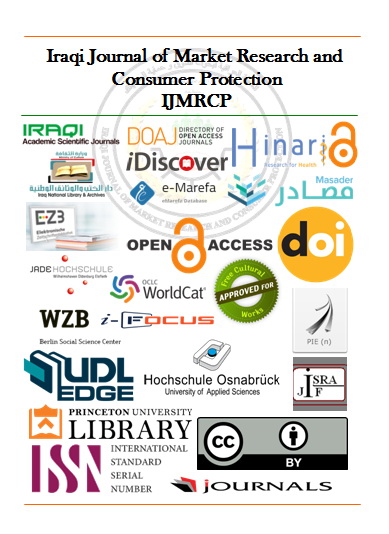THE COMBINED EFFECT OF BIOSTIMULANTS AND ANTIOXIDANTS ON THE VEGETATIVE, YIELD CHARACTERISTICS AND ITS COMPONENTS OF SOYBEAN
THE COMBINED EFFECT OF BIOSTIMULANTS AND ANTIOXIDANTS ON THE VEGETATIVE, YIELD CHARACTERISTICS AND ITS COMPONENTS OF SOYBEAN
DOI:
https://doi.org/10.28936/10.28936/(1)jmracpc11.2.2019Keywords:
Bio-Stimulants, antioxidant yield, yield components, soybean. Top of FormAbstract
A field experiment was carried out for the year 2022 at Experimental Station A of the College of Agricultural Engineering Sciences/ University of Baghdad/ Al-Jadriyah, located at latitude 33°N and longitude 44°E. The aim of the experiment was to determine the appropriate amount of bio-stimulants and antioxidants to produce the best chemical content of oil with a good protein ratio compared to seed and oil productivity, antioxidant compounds, and oxidative efficiency of soybean (Glycine max L.) seeds. The experiment was conducted according in a factorial arrangement the randomized complete block design (RCBD) for two factors and their interactions with three replication. The first factor included three levels of biostimulants: no spray, humic acid, and folic acid at a concentration of 2 g L-1 for each. The second factor included three levels of antioxidants: no spray, ascorbic acid, and glutathione acid at a concentration of 100 mg L-1 for each. Spraying was applied on vegetative system, first was one month after planting, the second after one month of the first spraying at the formation of branches stage, and the third at the 50% flowering stage. The results showed that bio stimulants had a significant effect on most growth traits, with the treatment of 2 g L-1 humic acid achieving the best results in growth traits, height plant (180.47cm), leaf area (104.15 dm-1), number of branches( 12.44 branch plant-1) ,fresh weight (450.16 g ),dry weight (308.03 g). while the treatment of 2 g L-1 folic acid achieved the best results in seed yield (289.10)g and total yield( 3.08) g . Antioxidants also had an effect on most growth and yield traits, with the spray of 100 mg L-1 ascorbic acid achieving a significant increase in leaf area( 98.01 dm2), while the treatment of 100 mg L-1 glutathione acid outperformed significantly in fresh weight (514.46 g) , dry weight (284.56 g), plant seed yield( 307.50 g plan-1), 100 seed weight(19.47 g ), total yield( 3.28 t ha-1), and oil yield (0.68 t ha-1). The combined effect of the study factors was significant in most growth and yield traits, but the treatment of 2 g L-1humic acid and 100 mg L-1ascorbic acid achieved a significant increase in plant height (148.53 cm), leaf area (110.95 dm-1). While the treatment of 2 g L-1 humic acid and 100 mg L-1Glutathione acid outperformed significantly in the number of branches (13.00 branch plant-), seed yield in the plant (337.80 g), total yield (3.60 g ) , and oil yield (0.99 t h-1). The combined effect of the treatment of 2 g L-1 folic acid and 100 mg L-1 Glutathione acid produced a significant increase in fresh weight (562.10 g) and 100 seed weight (22.00 g).
Published
Issue
Section
License
Copyright (c) 2024 Iraqi Journal of Market Research and Consumer Protection

This work is licensed under a Creative Commons Attribution 4.0 International License.





